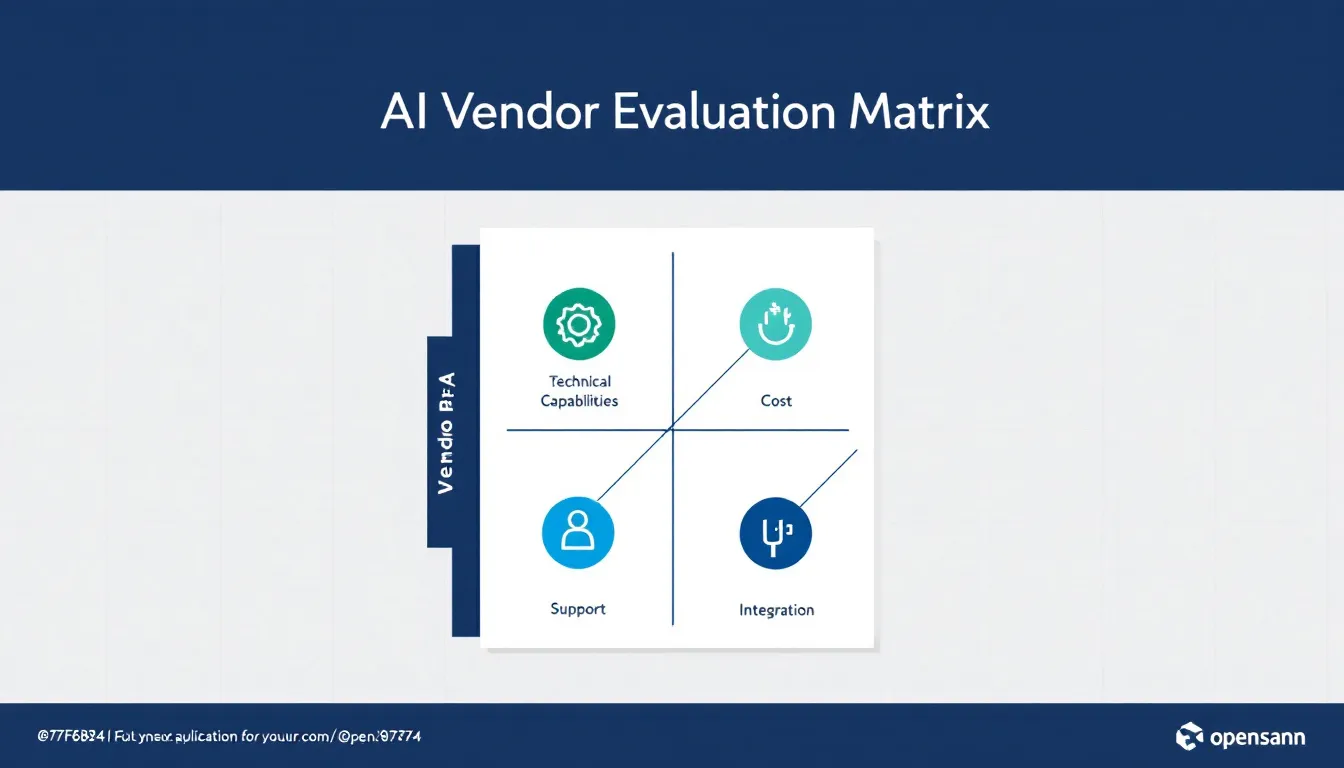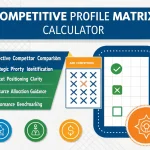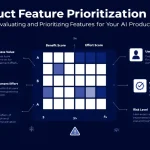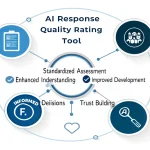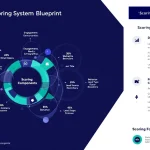AI Vendor Evaluation Matrix Generator
Is this tool helpful?
How to Use the AI Vendor Evaluation Matrix Generator Effectively
Use this tool to compare AI providers by creating a structured evaluation matrix based on your specific needs. Here’s how to fill out each section precisely:
1. Enter AI Vendor Names
- List the AI vendors you want to evaluate, each on a new line.
- Examples of vendor inputs:
- Salesforce Einstein
- Alibaba Cloud AI
- Dataiku
2. Define Your Evaluation Criteria
- Enter one criterion per line that matters in your decision-making.
- Examples of evaluation criteria:
- Data Privacy
- Model Customizability
- Speed of Deployment
- Customer Service
3. Assign Weights to Each Criterion
- Provide comma-separated weights reflecting each criterion’s importance.
- Weights must sum up to 1 or 100%. For example:
- 0.25, 0.25, 0.30, 0.20
4. Choose Your Rating Scale
- Select between a 1-5 or 1-10 scale for rating each vendor against criteria.
- Pick 1-5 for quicker evaluations or 1-10 for more detailed scoring.
About the AI Vendor Evaluation Matrix Generator
This tool simplifies vendor selection by using a weighted scoring system to objectively compare multiple AI providers across criteria important to your business. It reduces subjectivity and helps you prioritize factors based on your organizational goals.
With this evaluation matrix, you get a clear, quantifiable comparison allowing you to make faster and well-informed decisions when selecting AI platforms, services, or development tools.
How the Weighted Scoring Works
The tool multiplies each criterion’s weight by the vendor’s score and then sums these values to produce a total weighted score:
$$\text{Weighted Score} = \sum_{i=1}^{n} (w_i \times s_i)$$Where:
- wi = weight assigned to criterion i
- si = vendor’s score for criterion i
- n = total number of criteria
Practical Usage and Example Calculation
Imagine evaluating two AI vendors with four criteria weighted as follows:
- Accuracy (0.4)
- Cost (0.3)
- Usability (0.2)
- Support (0.1)
Vendor A Scores
- Accuracy: 9
- Cost: 7
- Usability: 8
- Support: 6
Calculation:
$$ \begin{aligned} \text{Vendor A Total Score} &= (9 \times 0.4) + (7 \times 0.3) + (8 \times 0.2) + (6 \times 0.1) \\ &= 3.6 + 2.1 + 1.6 + 0.6 = 7.9 \end{aligned} $$This score helps you directly compare Vendor A with others using the same criteria and weights, supporting objective selection.
Key Benefits of Using the AI Vendor Evaluation Matrix Generator
1. Make Objective, Data-Driven Decisions
- Eliminates personal biases by quantifying vendor capabilities.
- Provides consistent evaluation across all AI providers.
- Offers transparent, explainable scoring outcomes.
2. Save Time and Improve Collaboration
- Streamlines the vendor comparison process with clear, repeatable steps.
- Supports team decision-making by aligning on criteria and weights upfront.
- Speeds up vendor shortlisting and final selection.
3. Align Vendor Choices with Your Strategy
- Prioritize factors that match your organizational goals and technology roadmap.
- Customize weights to emphasize specific business needs like cost or compliance.
- Document rationale behind vendor selections clearly.
Common Use Cases for the AI Vendor Evaluation Matrix Generator
Enterprise AI Platform Selection
Organizations comparing large-scale AI platforms consider scalability, compliance, and integration capabilities. The matrix helps them weigh these factors equally and transparently.
AI Development Framework Assessment
Development teams evaluate frameworks based on feature set, community support, and ease of integration. The tool quantifies these aspects for clear comparison.
Healthcare AI Solutions Evaluation
Healthcare providers select vendors focussing on diagnostic accuracy, regulatory compliance, and interoperability. The matrix highlights strengths and trade-offs effectively.
Frequently Asked Questions
What is the recommended number of evaluation criteria?
We suggest 4 to 7 criteria to keep the evaluation manageable while capturing essential factors.
How should I distribute weights among criteria?
Assign weights based on how critical each criterion is to your goals. Higher priority criteria get larger weights, with the total summing to 1 or 100%.
Can I update criteria or weights after starting an evaluation?
Yes, you can adjust criteria and weights anytime. The evaluation matrix will recalculate scores according to your changes.
Which rating scale should I use?
Use a 1-5 scale for quick, high-level comparisons. Choose a 1-10 scale when you want more detailed, nuanced scoring.
How do I ensure consistent scoring among multiple evaluators?
Define clear guidelines and benchmarks for each score level. Communicate these standards with your team to maintain scoring consistency.
Can I save or export the evaluation results?
You can copy the evaluation matrix results to your clipboard for saving, sharing, or further analysis.
How often should I revisit vendor evaluations?
Review evaluations at least annually or when significant changes occur in vendor offerings or your business requirements.
Important Disclaimer
The calculations, results, and content provided by our tools are not guaranteed to be accurate, complete, or reliable. Users are responsible for verifying and interpreting the results. Our content and tools may contain errors, biases, or inconsistencies. Do not enter personal data, sensitive information, or personally identifiable information in our web forms or tools. Such data entry violates our terms of service and may result in unauthorized disclosure to third parties. We reserve the right to save inputs and outputs from our tools for the purposes of error debugging, bias identification, and performance improvement. External companies providing AI models used in our tools may also save and process data in accordance with their own policies. By using our tools, you consent to this data collection and processing. We reserve the right to limit the usage of our tools based on current usability factors.
